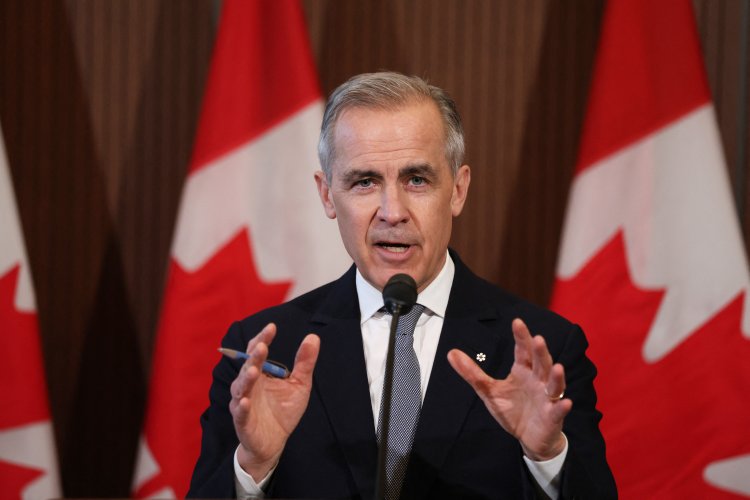Interpreting the True Message of Canadian Polls
A leading Canadian pollster discusses the ways in which Trump radically transformed the electoral landscape.

However, a veteran Canadian pollster soon began to detect a different trend.
In January, Frank Graves observed a surprising downward shift in Conservative support. Initially met with skepticism, particularly due to his reputation as a Liberal supporter who opposed Conservative Leader Pierre Poilievre, Graves's predictions began to gain attention. As Donald Trump spoke increasingly about tariffs and the prospect of annexing Canada, the Conservative Party's significant 25-point lead diminished. Now, Graves anticipates a solid win for Mark Carney and the Liberals.
“This is unprecedented,” Graves stated in an interview with PMG Magazine. “I have never seen a transformation of our voter landscape in Canada of that nature.”
As the April 28 election approaches, Graves shared insights into how he identified the early signs of Conservative decline and why the Liberals managed to connect with the current political climate shaped by Trump.
This interview has been edited for length and clarity.
You were among the first to notice that the Conservatives' popularity might be waning in January. What did your surveys reveal? What insights did you have that others missed?
At the start of the year, we began to see movement. The Conservative Party had a 25-point lead, a substantial margin in our polling system. The Liberals, as the incumbent party, were at an unprecedented low of 19 points, essentially tied with the National Democratic Party. Following that, we observed a continuous downward trajectory for the Conservatives; while it plateaued in recent weeks, the significant lead has vanished.
Others were skeptical, so I faced considerable criticism. Conservatives, who thought they could easily win, were unsettled by my findings indicating that the race was tightening.
My latest numbers show that the Liberals could secure a massive 200-seat majority. While I expect some regression, they still have a sizeable cushion. This is unprecedented. I have never seen a transformation of our voter landscape in Canada of that nature.
Interestingly, we have been compiling data daily for six months leading up to this election, which provides us greater agility compared to many competitors who gather fewer cases monthly. However, I received pushback, with some accusing me of attempting to influence voters.
How much will the election results be influenced by Donald Trump?
The most significant factor is undoubtedly President Trump and the shockwaves caused by his announcements—not just regarding tariffs and annexation, which caught attention, but the overall tone of his various declarations, like his plans for Gaza and comments about Ukraine.
When I asked Canadians whether the Trump administration has met their expectations, most expressed that it has been worse than anticipated. This realization triggered a recoil effect in Canada, leading to an uptick in national identity, which had previously been at a 35-year low. This growing sense of attachment to national identity is largely responsible for the Liberals' current position.
Moreover, the same factors that led to Trump's rise and Brexit are similarly influencing Canada. Our research assesses right-wing populist sentiments through questions about child-rearing preferences—whether obedience or creativity is more crucial. These attitudes are strongly correlated with support for Trump, Brexit, and the Conservative Party in Canada, a connection that wasn’t present a decade ago.
Additionally, a significant segment of Conservative supporters harbors beliefs linked to disinformation. They are significantly more likely to approve of Trump and share unfounded conspiracy theories about vaccines and climate change.
Approximately 25 percent of voters exhibit these characteristics, primarily among those who previously supported the People's Party, which has largely merged into the Conservatives under Poilievre. This voter base mirrors Trump supporters.
However, to reach 45 points, Mr. Poilievre attracted about 20 percent of voters who do not share those traits—those who are not institutionally mistrustful, including traditional conservatives and disillusioned liberals who still embrace Canadian values.
What advantage does this present for Carney?
Carney is perceived as competent and trustworthy in areas where Liberal leaders typically struggle. The critical issue is future trade relations with the United States, particularly regarding tariffs. He holds a distinct advantage here and is also seen as better equipped to handle economic growth, productivity, and inflation—domains where the Conservatives have historically fared well, yet this advantage has now shifted.
How has Poilievre responded to this?
Mr. Poilievre had effectively harnessed populism with a disciplined campaign, focusing on messaging like “Trudeau bad, Canada's broken, axe the tax.” Initially successful, this strategy faltered as Canadians reacted to perceived threats to national sovereignty. Transitioning away from a proven campaign strategy during such a critical period is challenging.
Moreover, his core supporters—those who resonate with Trump—aren’t alarmed by these geopolitical threats. This made it difficult for him to redefine his image as a strong protector of Canadian interests. Attempts to attack Carney, such as portraying him as another Trudeau, have not resonated substantially.
What is the state of the polling industry in Canada, particularly in light of the crisis in the U.S.?
Canada's polling industry is relatively stable compared to the skepticism observed in the United States. While there are skeptics, the overall public perception is positive, and trust in polling remains steady.
Canadian pollsters have demonstrated a strong track record. Unlike the significant misses seen in the U.S. during the 2016 election, Canadian pollsters have consistently predicted winners in recent elections, contributing to public confidence in polling accuracy.
What can we anticipate in this upcoming race based on your research? What trends are emerging?
In assessing Canadians’ emotional outlook for this election, I drew insight from a well-regarded pollster, Stanley Greenberg, who emphasized the importance of emotion in election outcomes.
I queried participants about their feelings—hopeful, despairing, angry, or fearful. Generally, while anger can motivate, despair can discourage voter turnout. Recently, the sentiment shifted toward hope. Despite anxiety surrounding tariffs and annexation, Canadians expressed optimism about their ability to maintain sovereignty and rebuild relationships amid a changing global landscape, which serves as a strong signal for the upcoming election.
Max Fischer for TROIB News
Find more stories on Business, Economy and Finance in TROIB business












